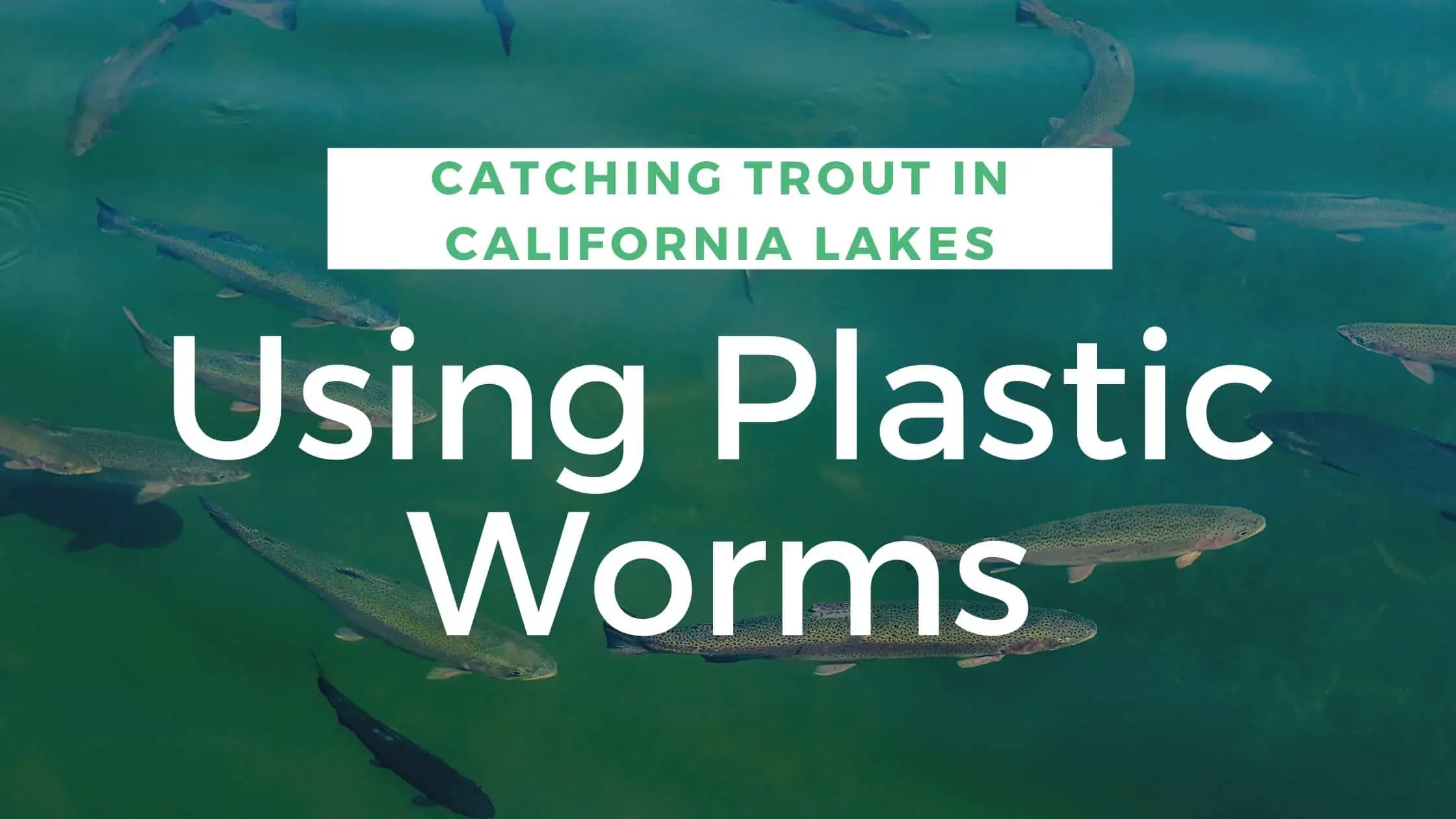Plastic worm fishing to catch trout
So I suppose you want to catch more trout in California lakes? This method of fishing has some benefits that make a day fishing on the lake more fun and enjoyable, getting more bites from these stock trout is such a blast. The nice part is you can pick-n-choose which trout you want to keep in your creed throughout the day. So here are some of my best trout fishing tips.
· What kind of hook?
A smaller size bait hook between 6 to 10 is perfect for this method of trout fishing. Using a smaller bait hook allows you to thread the plastic worm all the way up the hook and still allow a lot of action in the worm. This gives the worm a more natural look in the water as it slowly drifts to your set depth.
What is this method of fishing?
If you don’t know already, the method used to describe this type of fishing is simple. It’s all about casting your line at least 20 feet ahead into the water and letting it slowly sink. As your plastic worm goes down, your bobber holds the bait level nice and steady. For lake fishing, you can estimate how deep you want your worm to drift down. You can figure that 4-6 feet is enough to entice hiding trout, but some sport fishers like as little as 3 feet. The depth will need to be tested based on where you are casting.
As soon as you cast your line, wait a moment to slowly let your worm sink. If you do not get bit on the time your worm sinks then give the line a tug. This brings your warm back to the top of the water to slowly sink again, giving your bait more appeal and hopefully enticing a trout to bite. Continue this until you find some progress such as little nips at your bait. You might have to recast your line many times to find the sweet spot where trout are hiding.
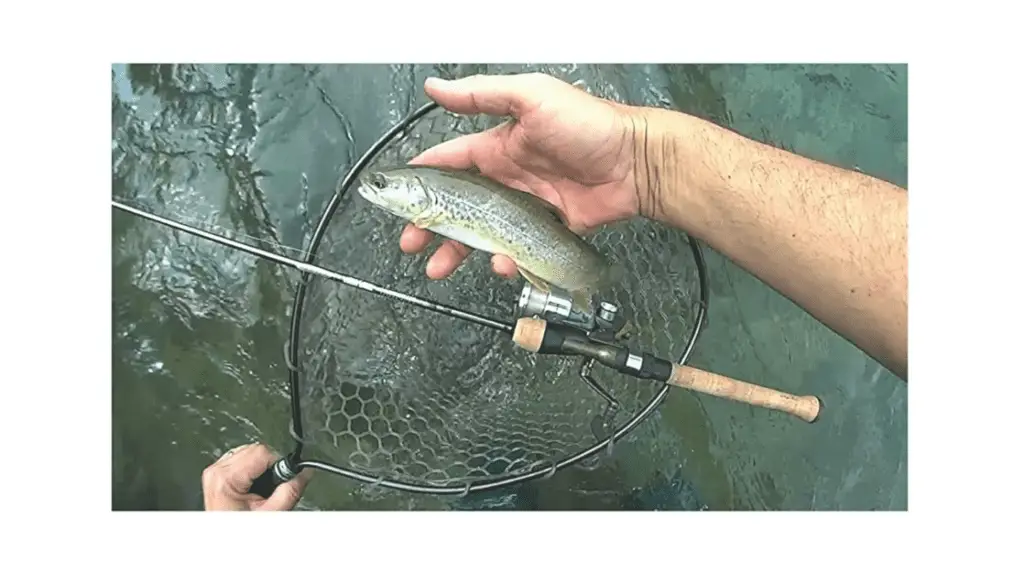
· What type of rod for trout fishing?
You often hear that a 7 foot rod is a good length, but you also need to consider which line class you’re using. A 5-8lb 100% fluorocarbon line attached to a 10-15lb braided line is generally the best. The casting weight should be a split shot # 3/0 or #7. Moreover, it’s easier to cast a line with a 7-foot rod. Using this length of rod will make weighted baits no more than 20 grams easy to cast and land further from your fishing position.
If you’re looking for a great trout rod, this one is a light fast action rod with a height of 7′ and a 4-8lb rating. For catching stocker trout this is ideal and makes catching these fish extremely fun.
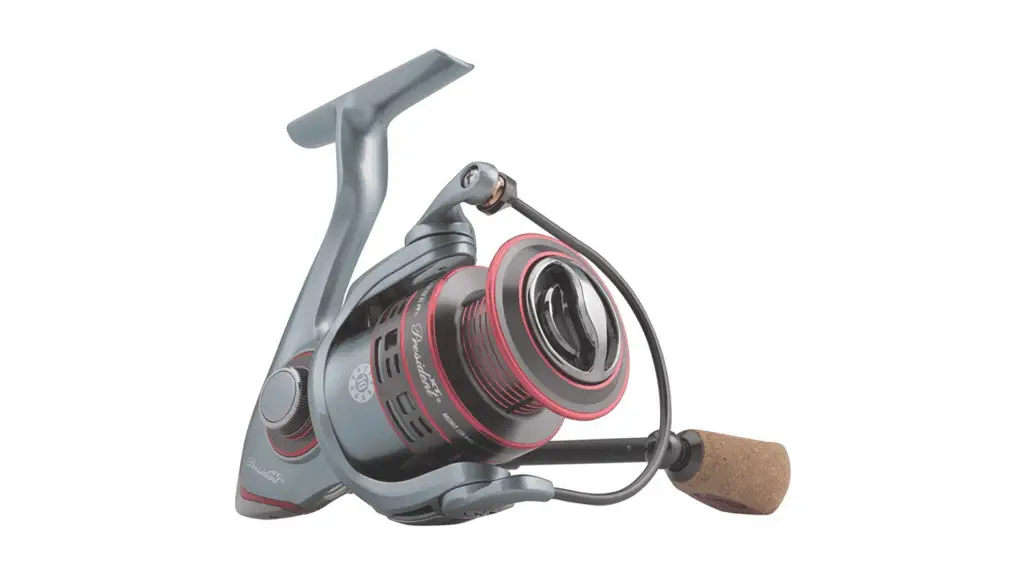
· What kind of reel
Obviously, you need to pair the rod you’re using with a reel that’s intended for the kind of line you’re casting. I recommend the Pflueger President XT Spinning Reel. This reel is great for lake trout, crappie, and even small perch. Just be sure to bring the right rod and spinning reel that matches the habitat you intend to fish in. You might want to bring 2 rods and reels for your trout fishing setup needs.
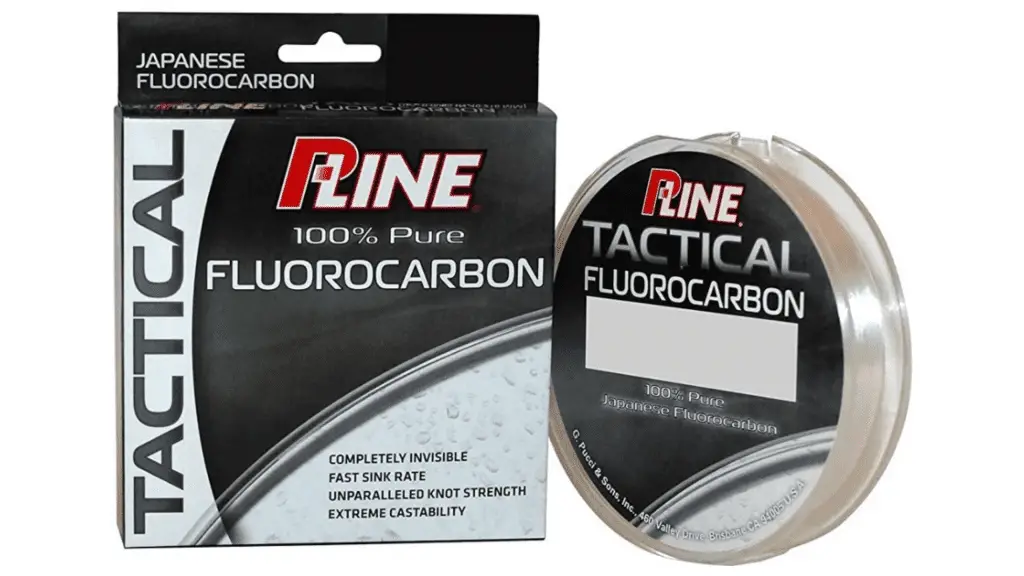
· What kinds of line
On most of the 7-foot rods, you’ll be using a 6lb P-line 100% fluorocarbon, and adding a swivel for your lead line. Shorter rods will have 2-4lb test lines, though I have to recommend P-line fluorocarbon because of their flexibility and strength. It goes without saying that trout fishing in California needs adequate strength to keep your tension while reeling in a fighter.
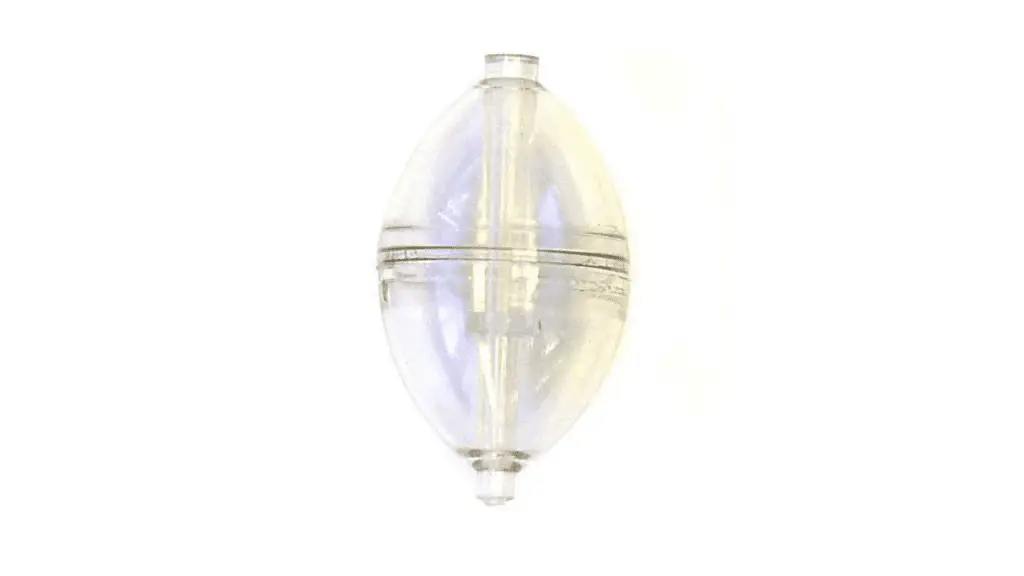
Using a weighted bobber
As mentioned earlier, you can adjust your depth to 4-6 feet, but you can adjust for 3 feet at first. This is when you’re in shallow lake spots near the shore. If you’re casting to deeper areas, this length needs to be increased. I highly recommend that you use a water bobber too. There are a few that work nicely but if you use a standard bobber, you’ll need a split shot to weigh it down.
Some bobbers can be filled with water to act like ballasts for your line. They also float but right at the surface breaking the water. If you use a plastic lure that floats you should add a split shot to hold the depth level. Weighted lure worms will also do the trick. These are often molded with salt to give them weight and some scent attraction. I don’t like these since they break down faster and aren’t as flexible.
· Leader head link
The type of line you should add to your leader is the 8lb P-line 100% fluorocarbon line. This is best for the 7-foot rods, however, this might be too thick if you are using a 2-4lb line. Try using a 6lb leader instead. This leader is tied-off to your mainline using a swivel. You’ll attach a swivel to your mainline with a standard fisherman’s knot. The leader line is 3-6 feet long and attached to the mainline swivel using the same fisherman’s knot.
· Where to add your split shot?
On the leader line, you add your bobber 6-8 inches under the tie-off point. Then measure about 1 yard (3 feet) from your tie-off point. This is where you take a split shot and attach that to your leader. It doesn’t need to be a large weight, so choose a split shot that you feel is best. What this does is it gives you enough slide between the tie-off point and split shot for depth control. This is one of the easiest trout fishing tips I can offer.
Types of artificial worms that work best
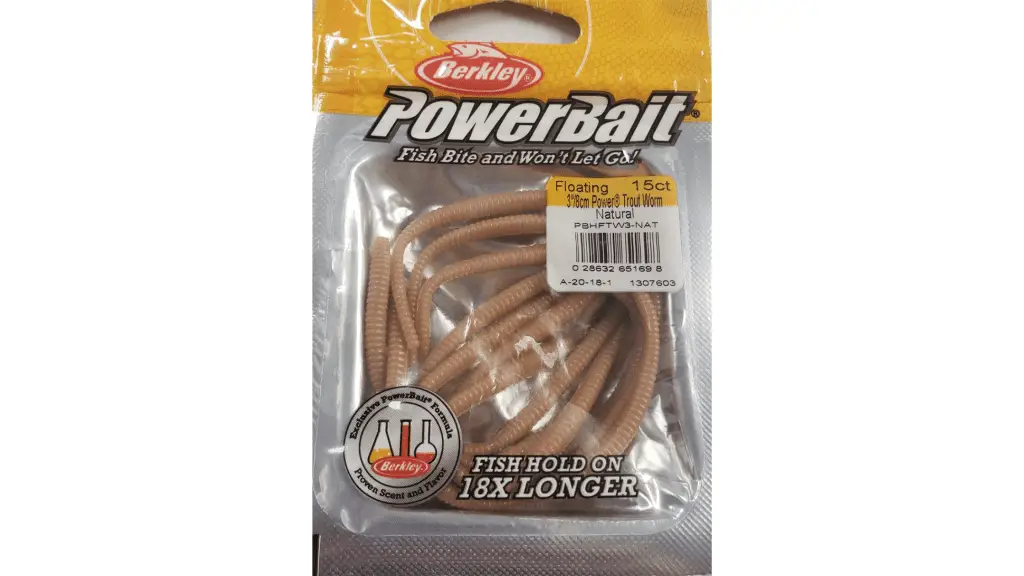
· Scented worms
Trout have a pretty good sense of smell and they like the scent of a tasty worm. This is why sport fishermen like to try scents that match their feeding habits. If you’ve seen plastic baits that have scent added, they’re pretty intense with pungent smells, this is what you want for luring them to your bait. I’ve found that some of the best worms are ones that also look natural. Here is a great example:
· Colored worms
I know you probably have your opinion on what colors work best. I seriously believe that natural colors work better since you don’t see neon yellow and pink worms in real life. Despite the electric colors they represent, how often are these kinds of bait found at the lake you’re fishing at? Stick to natural, realistic colors. If you can be fooled by looking at them, imagine if you give them some life by tugging the line.
· Setting an artificial worm on your hook
You’ll set the worm on a hook the same way you place a real worm. Start with one end of the worm and stab the head over the barbed hook end. Run this halfway around the curve of the hook before you exit the hook top, half of the way through the plastic worm. It should look as if the worm is now hanging straight while the curve of the hook is off to the side. You’re now ready to cast your line.
· Worm tips after you cast your line
You want to give this worm a bit of boogie-woogie. This means that the worm will slowly sink after it’s cast into the water. Give your line a slight yank, this makes the worm wiggle under the water. Since this plastic is very flexible it will appear the worm is living. The more often you do this, the easier it is to trick your trout. Learn to puppeteer your bait, and you’ll get more bites as a result while trout fishing in California.
· What if you get a nipper?
You’re going to get nips and bites all through the day, and some of these are from smaller trout. Chances are you have to re-bait your hook if they get away with a chunk of your plastic lure. Don’t sweat-it when this happens, lakes that have stocked trout are notorious for sneaky cheaters. You just have to bring a good supply of plastic bait to last the day. A couple of packets of Berkley floating trout worms is more than enough.
Where to cast your line
Any kind of trout fishing setup includes a good location. If you have access to a boat, you might have better chances. That doesn’t mean that lakeside locations aren’t good spots. To catch a trout, you need to think where are their hiding spots where they would feel safe. If you have good visual senses for what’s underwater, you can bet the bigger rocks and crevices are great starting points.
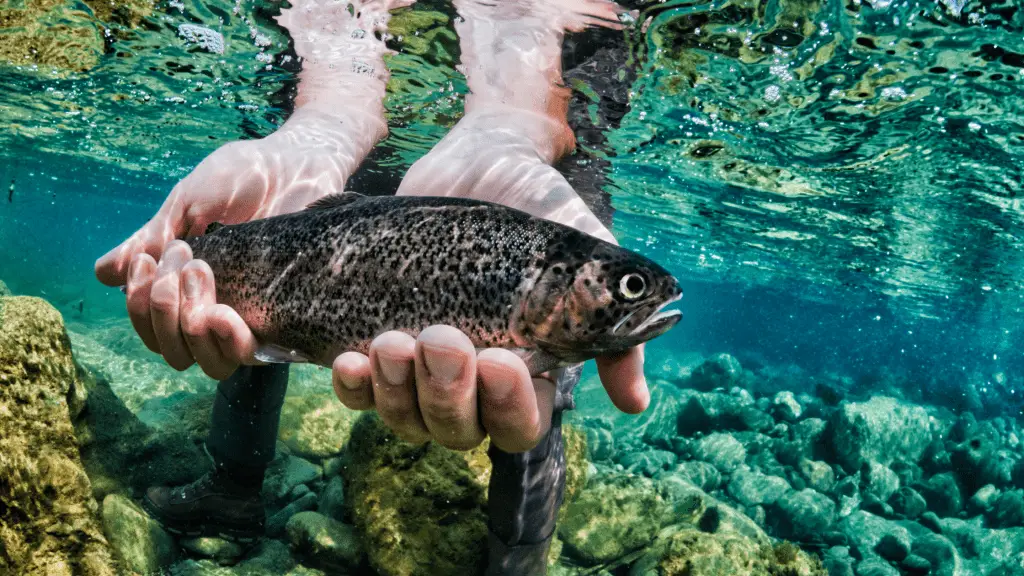
Reeling in your trout
When you get that one that finally gets hooked, you need to act quickly. No matter what size it may be, continual tension on the line is best. This way, you can reel in smaller trout that didn’t completely swallow a hook. This can be brought closer to you so you can hold them over the water. Often they’re wiggling enough that they unhook themselves off and return to the water. Among the best trout fishing tips, this one is the easiest to do.
The bigger ones that you want to keep you’ll need to unhook manually. This will usually include using long-nose pliers to bend the hook out from their mouths. Note that, the bigger ones want to throw back you may need to pinch the hook barb and remove it without causing further damage. Also make sure to wet your hands with the lake water before handling these delicate fish. You can then let the trout go to swim another day. What you keep at that point is based on the length and the number that you are allowed to keep. This is often 5 per day at most trout fishing lakes.

